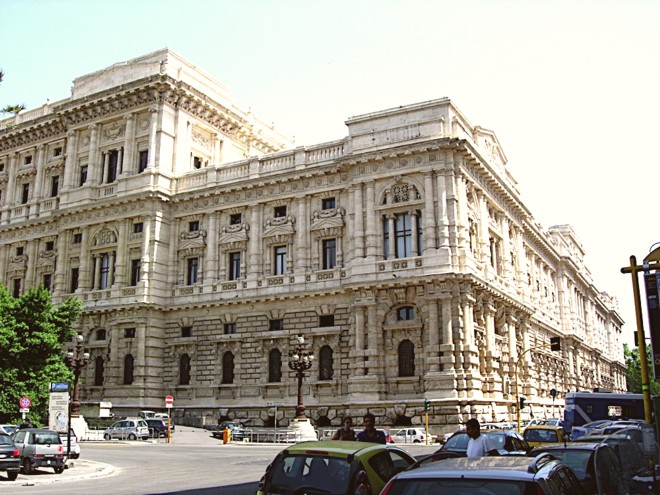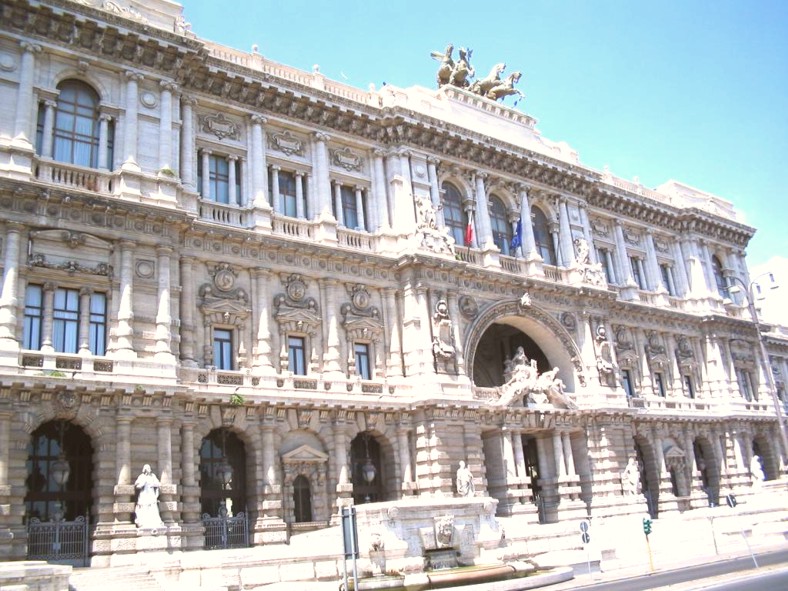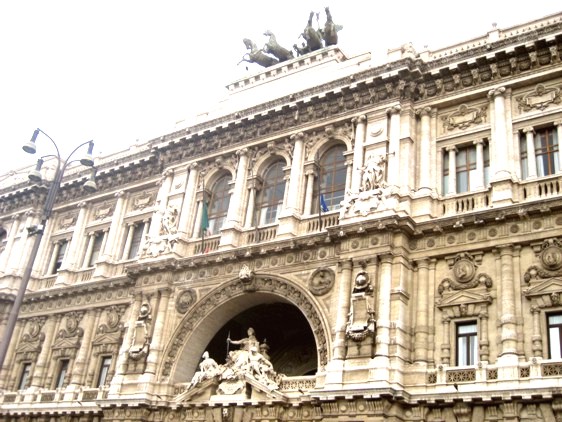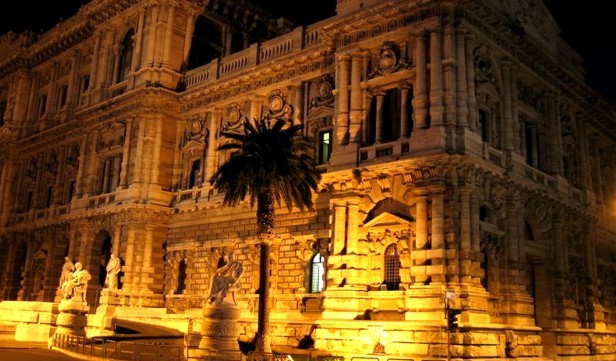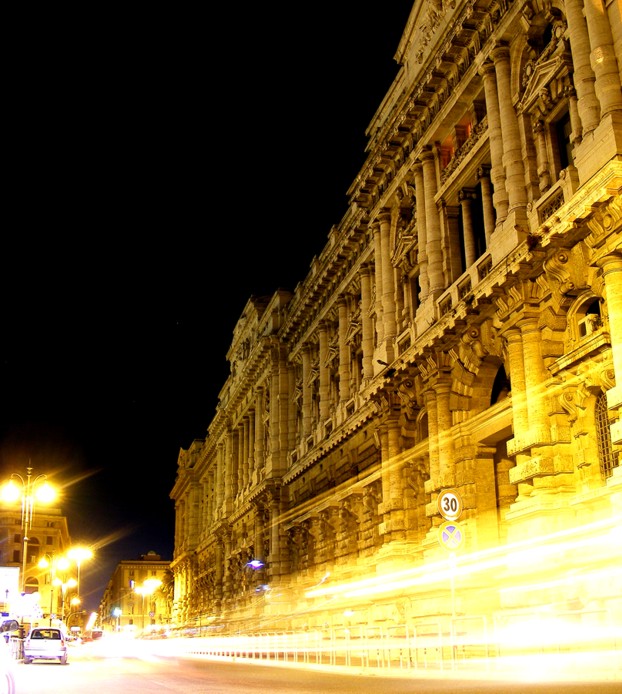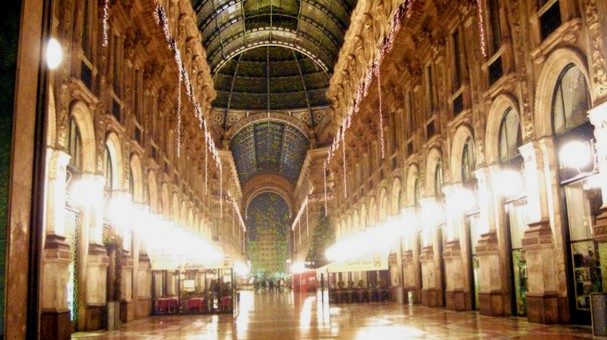
Category: 2 Italian mileu hoax
Thursday, May 19, 2011
Andrea Vogt Obtains New Rome Embassy Cables From State, Still Showing Zero Concern About Knox
Posted by True North
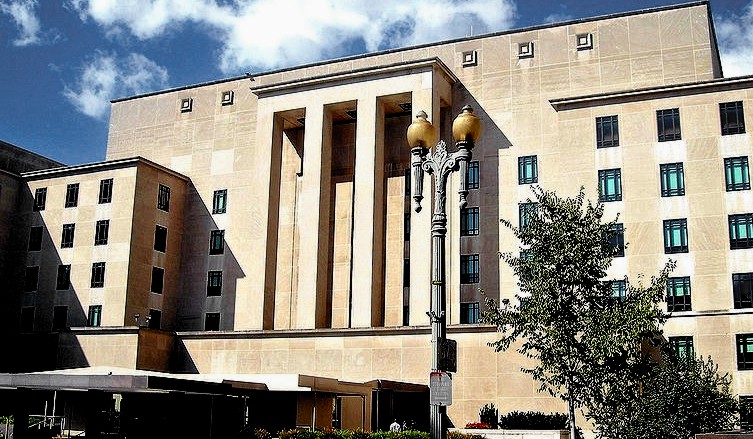
The State Department released seven cables a year ago. Click image above for details of the further release.
They were obtained under the Freedom of Information Act. These now provide a complete overview. The new cables are as bland and routine and unconcerned about Amanda Knox as ever.
There was no smoking gun among them, as the Knox PR campaign had so very much hoped for. The State Department will never move on this case based on how Italy handled it.
Remarkably, the increasingly bitter loser “Bruce Fisher” actually draws attention to the Knox PR campaign’s big disappointing loss with these bland new cables showing Italy has handled the case just fine in the Embassy’s eyes.
The poster of the first seven cables, History Buff, had hoped they would show the Rome Embassy was really concerned about Amanda Knox’s trial and sentence. No such luck. He seems to have hidden those cables now.
You can still read them here
Thursday, January 20, 2011
The New 80,000 Pound Gorilla In The Room Introduced By The Italian Supreme Court
Posted by Our Main Posters

[St Peter’s and the Vatican in background; Palace of Justice, large white building by river in left foreground]
What is the biggest headache for the defenses?
That their areas of appeal, already circumscribed by Judge Hellman, could all explode in their faces? The low-credibility witnesses Alessi and Aviello? The limited DNA retesting? The re-examination of the witness in the park who had no cause to make anything up?
Or that Rudy Guede gets totally ticked off by Alessi’s claims that Rudy Guede said he did it with one or two others, and so Guede tells the court all that REALLY happened?
No, it looks to us that the defenses’ biggest headache by far is that the court of final appeal in Rome (the Supreme Court of Cassation, which is superior to the Perugia appeals court and will hear the second and final appeal) has ALREADY accepted that Rudy Guede’s sentencing report of January 2009 holds up.
And that all three of them attacked Meredith.
The written report from Cassation on that December 2010 decision on Guede’s final appeal (due soon), plus Judge Micheli’s Sentencing Report for Rudy Guede of January 2009, plus all that associated evidence, now gets automatically ported by law straight into Knox’s and Sollecito’s appeal.
Judge Micheli took a hard line toward Rudy Guede, and he sentenced him to 30 years. He also remanded Knox and Sollecito to trial, and his report explains the basis for that remand.
Judge Micheli’s remorseless and tightly argued report (see summaries below) very comprehensively backed up his decisions. (Later reductions in sentence were automatic and they flowed from the terms of Guede’s short-form trial, and some controversial mitigating circumstances advanced by Massei for Knox and Sollecito.)
The prosecution’s appeal against the Knox and Sollecito sentences argues that the acceptance of mitigating circumstances by the Massei court should be thrown out, and that Knox and Sollecito should be subjected to a longer sentence. Remember that even in the case of Alessi’s wife, who was not even present when he beat the kidnapped baby to death, she received a sentence of 30 years.
So here is how it is stacking up:.
- For the prosecution, four courts including the Supreme Court of Cassation have ruled that three people participated in the crime against Meredith, plus all of the evidence from both the Guede and Knox Sollecito trials now comes in, plus the prosecution is appealing for tougher sentences, which seems well justified based on precedents.
- For the defenses, just those few areas the defenses want to challenge which have been allowed by Judge Hellman NONE of which are sure things.
Really not very much going for the defenses here. No wonder they already seem to be phoning it in.
Our meticulous summaries of the Micheli Report by main posters Brian S and Nicki were based on our own translation. A huge amount of work. They were posted nearly two years ago. Periodically we link to them in other posts or we point to them in an email.
Those who do read those posts fresh are often stunned at their sharpness, and for many or most it becomes case closed and the verdict of guilty is seen as a fair one.
We think those posts on Micheli are so key to a correct grasp of Knox’s and Sollecito’s appeal prospects that they should now be reposted in full.

[St Peter’s and the Vatican in foreground; Palace of Justice, large white building in left background]
Understanding Micheli #1: Why He Rejected All Rudy Guede’s Explanations As Fiction
By Brian S
Judge Micheli has had two very important roles. He presided over Rudy Guede’s trial and sentencing, and he presided over the final hearing that committed Raffaele Sollecito and Amanda Knox to trial.
A week ago, just within the three-month deadline, Judge Micheli made public the 106-page report that explains the thinking behind both actions. This is a public document, and in the enviable Italian legitimizing process, the public is encouraged to get and read the report and to understand the full rationales. Excellent analyses have already appeared in Italian in Italy, but no English-speaking sources on the facts of the case have either put the report into English or published more than the most superficial analysis.
These posts will examine several very key areas of the report so that we too may choose whether to buy into the rationales. The translations into English here were by native-Italian speakers and fellow posters Nicki and Catnip. The next post will explain why Micheli ruled out the Lone Wolf Theory, and why he concluded that Knox and Sollecito appeared to be implicated in Meredith’s murder and should therefore be sent to trial.
Judge Micheli maintained that from the moment Meredith’s body was discovered until his arrest in Germany on November 19th, Rudy Guede was in a position to compile a version of his involvement in events at the cottage which would minimise his reponsibilities and point the finger of guilt elsewhere.
He was able to follow the course of the investigation in newspapers and on the internet. He would know of the arrests of Amanda, Raffaele and Patrick. He would know that the investigators had found biological evidence which would sooner or later connect him to the murder, and he would know of other discoveries and evidence which had been publicised in the media.
His story as told in Germany was compiled with all the knowledge about the crime and investigation he would have sought out. On his return to Italy in December he was interviewed by the investigating authorities and gave version 2. He was interviewed again in March which resulted in version 3, and later still made a spontaneous statement to change one or two facts including the admission that the trainer footprint in Meredith’s room could be his. Judge Micheli said:
- Analyzing the narratives of the accused…he is not credible, as I will explain, because his version is (1) unreliable, and (2) continuously varying, whether on basic points or in minor details and outline.
Micheli then examined the details of Rudy’s claimed meeting with Meredith which resulted in his invitation to the cottage on the evening of November 1st.
He noted there were substantial differences between his versions of December and March, particularly with regard to the location of his meeting with Meredith on the night of Halloween and his movements in the early evening of November 1st.
He considered it likely that Rudy had made these changes as he became aware of evidence which contradicted his December version. Notably, in December Rudy claimed to have had his meeting with Meredith which resulted in her invite at a Halloween party given by Spanish students.
By March it was well known that Meredith had spent her entire Halloween in the company of friends, first in the Merlin pub before they later moved on to Domus disco. In March Rudy changed the location of his meeting with her from the Spanish party to Domus, which by chance Rudy had also attended following the party. However, neither Meredith’s friends who were continuously in her company nor those who accompanied Rudy to the Domus witnessed any meeting between the two. Judge Micheli commented:
- On 26 March 2008, instead, Rudy explained to the Prosecution, drawing a picture, that the group invited to the Spaniards’ house actually moved wholus-bolus to the “Domus” club, but it was right in that nightclub that he met Kercher, and not before; offering up a tour-guide description from the chair, saying, “there’s a bar for the drinks and then there’s a room, there’s an arch and a room. I walking [sic] around there, and that’s where I met Meredith”. On the facts of the meeting and the subject of the conversation, he elaborated: “I started talking to Meredith “¦talking anyway I gave her a kiss.. after which I told her how much I liked her and asked her if the next day, in all the confusion anyway, if we were going to meet the next day and she said yes (”¦), we met in the evening around half eight, like that.
While not intending to explore the question, basically irrelevant, of whether the pair had agreed to a more or less specific time (his confirmation of the suggestion of 8.30 pm in both verbal statements however allows the inference that according to Guede they had an appointment), the patent contradiction between the two versions jumps out. One context, of a room between two bathrooms, in an apartment, is completely different to that of a drinks-bar and an arch, in a pub; one might concede, perhaps, the possibility of forgetting which place it was where they last bumped into a friend, but hardly the first time there was a kiss with a girl towards whom one was attracted.
With regard to his movements in the early evening of November 1st, Rudy’s friend Alex failed to corroborate Rudy’s December claim to have visited his flat. He said he didn’t see Rudy either before or after his meeting with Meredith at her cottage.
In March, Rudy changed his story and claimed to have risen at 6pm(following the all-nighter at Domus) before wandering around town for an hour or so. He then said he went to Meredith’s cottage but received no answer so he carried on to Piazza Grimana in the hope he might see people he knew. He thought he arrived in the Piazza at around 7:30pm. He claimed that some time later he left Piazza Grimana and called at the Kebab shop before returning to Meredith’s cottage and arriving some time between 8:30 and 9:00pm.
He said he then waited until her arrival some time just after 9:00pm. It was noted that in both his December and March versions Rudy said he had arranged to meet Meredith at 8:30pm. Micheli noted that this didn’t sit well with another arrangement Rudy had made to meet Carlos (from the Spanish party) between 9:00 and 10:00pm.
Micheli said that neither version of Rudy’s movements could be treated as true because he changed his story to fit facts as they became known and there was absolutely no corroborating witness evidence.
Rudy claimed two situations evolved following his entry with Meredith into the apparently empty cottage:
Whilst he was having a drink of fruit juice from the fridge, he claims Meredith found that 300 euros (her rent money) was missing from her bedside cabinet. Meredith was naturally upset by this discovery and straight away blamed “druggy Amanda”. Rudy said they both checked Amanda’s room to see if the money was there. However, it couldn’t be found and Rudy sought to console her.
He says that this consolation developed into an amorous encounter which proceeded to the stage where “Meredith asked him” if he had a condom. He told he didn’t and since she didn’t either they stopped their lovemaking.
Judge Micheli had a real problem with this story as told by Guede. He found it unlikely that Meredith would be interested in lovemaking so soon following the discovery that her money was missing. He found it unlikely that it was Meredith who was leading the way in this amorous encounter as Rudy was suggesting with his claim that it was “Meredith who asked him” if he had a condom.
Surely, Micheli reasoned, if Rudy was hoping to indulge in a sexual encounter with Meredith following the previous night’s flirting, he would, as any young man of his age, ensure that he arrived with a condom in anticipation of the hoped for liason. But even if he didn’t, and it was true that events had reached the stage where Meredith asked him, then surely given his negative response, Meredith would have again gone into Amanda’s room where, as she had told her friends, condoms were kept by her flat mate. Judge Micheli simply didn’t believe that if they had got to the stage of lovemaking described by Rudy, and following his negative response to her question, they just “STOPPED”. Meredith would have known she had a probable solution just metres away.
Rudy claimed he then told Meredith he had an upset stomach because of the kebab he had eaten earlier. She directed him to the bathroom through the kitchen.
Rudy put on his i-pod and headphones as he claimed was his habit when using the toilet. In his December version Rudy said the music was so loud he heard the doorbell ring but he made no reference to hearing any conversation. A perfect excuse, Judge Micheli says, for not hearing the disturbance or detail of Meredith’s murder. However, in his March version he claims he heard Amanda’s voice in conversation with Meredith. When Rudy did eventually emerge from the bathroom he says he saw a strange man with a knife and then a prone Meredith. Micheli commented:
- ...it is necessary to take as given that, in this case, Kercher did not find anything better to do than to suddenly cross from one moment of tenderness and passion with him to a violent argument with someone else who arrived at that place exactly at the moment in which Rudy was relieving himself in the bathroom. In any case, and above all, that which could have been a surprise to the killers, that is to say his presence in the house, was, on the other hand, certainly not put into dispute:
Meredith, unlike the attackers, knew full well that in the toilet there was a person who she herself allowed in, so for this reason, in the face of someone who had started raising their voice, then holding her by the arms and ending with brandishing a knife and throwing her to the floor, why would she not have reprimanded/reproached/admonished him immediately saying that there was someone in the house who could help her?
“¦Meredith didn’t shout out loudly for Rudy to come and help
“¦There was a progression of violence
“¦The victim sought to fight back
If it is reasonable to think that a lady living 70 metres away could hear only the last and most desperate cry of the girl ““ it’s difficult to admit that Guede’s earphones, at 4-5 metres, would stop him hearing other cries, or the preceding sounds.
Micheli was also mystified as to why Amanda (named in Rudy’s March version) would ring the doorbell. Why wouldn’t she let herself in using her own key? He supposed it was possible Meredith had left her own key in the door which prevented Amanda from using hers, but the girls all knew the lock was broken and they were careful not to leave their own key in the door. Perhaps, Meredith wanted some extra security/privacy against someone returning and had left her key in the lock on purpose. Maybe Amanda was carrying something heavy and her hands weren’t free. Or, maybe, Rudy was just trapped by his December story of the doorbell when he didn’t name anybody and an anonymous ring on the doorbell was plausible.
The judge then took issue with Rudy’s description of events following the stabbing of Meredith. Rudy claimed that when he emerged from the bathroom he discovered a man with a knife standing over Meredith. In the resultant scuffle he suffered cut wounds to his hand. armed himself with chair to protect himself. before the attacker fled when he fell over because his trousers came down around his ankles. Micheli said that those who saw Rudy later that night didn’t notice any wounds to Rudy’s hands although some cuts were photographed by the police when he was later arrested in Germany.
Micheli found Rudy’s claim that the attacker ran from from the house shouting “black man found, black man guilty” unbelievable in the situation. In the panic of the moment it may be conceivable that the attacker could shout “Black man…, run” following the surprise discovery of his presence in the house, but in the situation Rudy describes, blame or expressions of who the culprit thought “the police would find guilty” made no sense. It would be the last thing on an unknown attackers mind as he sought to make good his escape.
Micheli considers the “black man found, black man guilty” statement an invention made up by Rudy to imply a possible discrimination by the authorities and complicate the investigation. Micheli also saw this as an excuse by Rudy to explain away his failure to phone for help (the implication being that a white man could have made the call). It was known by her friends and acquaintances that Meredith was never without her own phone switched on. She kept it so, because her mother was ill and she always wanted to be available for contact should her mother require help when she was on her own
Judge Micheli regarded Rudy’s claimed efforts to help Meredith impossible to believe, given the evidence of Nara Capezzali. Rudy claimed to have made trips back and forth to the bathroom to obtain towels in an attempt to staunch the flow of bood from Meredith’s neck. He claimed to have leaned over her as she attempted to speak and written the letters “AF” on the wall because he couldn’t understand her attempted words. His described activities all took time and Rudy’s flight from the house would have come minutes after the time he alleged the knife-man ran from the cottage.
Nara Capezzali maintained that after she heard Meredith’s scream it was only some seconds (well under a minute) before she heard multiple footsteps running away. Although she looked out of her window and continued to listen for some time because she was so disturbed by the scream, she neither heard nor saw any other person run from the house. That Rudy had run wasn’t in doubt because of his collision on the steps above with the boyfriend of Alessandra Formica. Micheli therefore considered it proven that “all” of Meredith’s attackers, including Rudy, fled at the same time.
Earlier in his report Micheli considered character evidence on Rudy given by witnesses for both prosecution and defense. Although he had been seen with a knife on two occasions, and was considered a bit of a liar who sometimes got drunk, the judge didn’t consider that Rudy had previously shown a propensity for violence, nor behaviour towards girls which differed markedly from that displayed by many other young men of his age.
However, because of the wealth of forensic evidence [on which more later] and his admitted presence in the cottage, combined with his total disbelief in Rudy’s statements, Micheli found Rudy guilty of participation in the murder of Meredth Kercher.
He sentenced him to 30 years in prison and ordered him to pay compensation of E2,000,000 each to Meredith’s parents John and Arline Kercher, E1,500,000 each to Meredith’s brothers John and Lyle Kercher plus E30,000 costs in legal fees/costs + VAT. Also E1,500,000 plus E18,000 in legal fees/costs + VAT to Meredith’s sister, Stephanie Kercher.
Understanding Micheli #2: Why Judge Micheli Rejected The Lone-Wolf Theory
By Brian S
And so decided that Raffaele Sollecito and Amanda Knox should face trial.
First, just to recap: Judge Micheli presided over both Rudy Guede’s trial and sentencing to 30 years and the final hearing that committed the two present defendants to trial.
Ten days ago, Judge Micheli made public the 106-page report that explains the thinking behind both actions. This is a public document, and in the enviable Italian legitimizing process, the public is encouraged to get and read the report and to understand the full rationales. Excellent analyses have already appeared in Italian in Italy, but no English-speaking sources on the facts of the case have either put the report into English or published more than the most superficial analysis.
These posts are examining several very key areas of the report so that we too may choose whether to buy into the rationales. The translations into English used here were by native-Italian speakers and fellow posters Nicki and Catnip.
Right at the outset of his Sentence Report on the conviction of Rudy Guede, Judge Micheli stated that it was neither the place nor his intention to make the case against either Raffaele Sollecito or Amanda Knox. He said he must necessarily involve them to the extent that they were present at the discovery of Meredith’s body. He said he must also examine evidence against them where he saw it as indicating that Rudy Guede was not a lone wolf killer and implicated them as his possible accomplices in Meredith’s murder.
Judge Micheli described the sequence of events laid out by the prosecution which lead to the discovery of Meredith’s body:
Early on the morning of November 2nd, Signora Lana Biscarini received a bomb threat call made to her home at 5A Via Sperandio. (This later transpired to be a hoax.)
Some time later Signora Biscarini found a mobile phone in her garden. She “had heard” that bombs could be concealed in mobile phones and so she took it to the police station arriving at 10:58am as recorded by ISP. Bartolozzi
The postal police examined the phone and following removal of the SIM card, discovered at 11:38am that it belonged to a Filomena Romanelli who lived at the cottage at 7 Via della Pergola. Following a call by Signora Biscarini to check with her daughter who was still at home, it is in the record at 11:50am that neither say they know the Filomena in question. At around noon Signora Biscarini’s daughter rings her mother at the police station to say she has found a second phone.
The second phone (Meredith’s) is collected from Via Sperandio and taken to the police station. Its receipt there is logged by ISP. Bartolozzi at 12:46pm. During its examination Meredith’s phone is also logged as connecting to the cell of Strada Borghetto di Prepo, which covers the police station, at 13:00pm. At 13:50pm both phones, which have never left the police station following their finding, are officially seized. This seizure is entered in the log at 14:00pm.
Separately, as part of the bomb hoax investigation, agents of the postal police are dispatched to make enquiries at Filomena’s address in Via della Pergola.
They are recorded in the log and filmed on the car park camera as arriving at 12:35pm. They were not in possession of Filomena’s phone, which remained at the police station, nor of Meredith’s which at this time was being taken from Via Sperandio to the police station for examination as part of the bomb hoax enquiry.
Judge Micheli said that some confusion was created by the evidence of Luca Altieri (Filomena’s boyfriend) who said he saw two mobile phones on the table at the cottage. But, Micheli said, these two phones either belonged to the others who arrived, the postal police themselves or Amanda and Raffaele. They were NOT the phones of Filomena or Meredith.
On their arrival at the cottage, the agents of the postal police found Raffaele Sollecito and Amanda Knox standing outside the front door.
The two seemed surprised to see them (the postal police had come to talk to Filomena about a bomb hoax which potentially involved her phone, plus they had recently been informed of the discovery of second phone in the same garden), but then they explained they had discovered suspicious circumstances inside the cottage.
Raffaele said he had already phoned the police and they were awaiting their arrival in connection with that. Elsewhere in his report Micheli points out that Raffaele did, in fact, make a call to his sister at 12:50pm, followed by two calls to “112” reporting a possible burglary at 12:51 and 12:54pm, 15 minutes after the arrival of the postal agents.
Judge Micheli said the postal police were shown into the cottage by Raffaele and Amanda. They pointed out the traces of blood around the apartment, the state of the toilet and the disturbance to Filomena’s room. They said they didn’t think anything had been taken. They pointed out that Meredith’s door appeared to be locked, Raffaele said he had tried to open it, but Amanda said Meredith used to lock the door even when she was going to the bathroom to shower.
Shortly afterwards Luca Altieri and Marco Zaroli arrived. Luca said he had just been contacted by his girlfriend Filomena, who in turn had just been contacted by Amanda Knox about the possible break in. A few minutes later, Filomena herself arrived with Paola Grande. Micheli noted that Filomena had immediately contradicted what Amanda had told the postal police and she said that Meredith never locked her door. She also told the postal police that the phone found with a SIM card in her name was in fact Meredith’s 2nd phone, that she had given Meredith the SIM as a present. The postal police said that they didn’t have the authority to damage property and so the decision was made that Luca would break down the door.
This he did. The scene when the door flew open was instantly obvious, blood everywhere and a body on the floor, hidden under a duvet except for a foot and the top of Meredith’s head. At that point ISP Battistelli instantly took charge. He closed the door and forbade anyone to enter the room before contacting HQ.
Following his description of the events which lead to the discovery of Meredith’s body, Micheli then dedicates quite a few pages of his report to detailing the exact locations, positions, descriptions and measurements of all the items, blood stains, pools and spots etc.etc. found in her room when the investigators arrived. He also goes into precise details on the injuries, marks, cuts and bruises etc. which were found by Lalli when he examined Meredith’s body in situ at the cottage before she was moved. Despite their extent, it is obvious these details are only a summary of the initial police report and also a report made by Lalli on the 2nd November.
It is these details which allowed the prosecution to lay out their scenario for the events which they say must have happened in the room. It is also these details which convince Micheli that it was impossible for this crime to be carried out by a single person. In his report, he dismisses completely the scenarios presented by the defences of Amanda and Raffaele for a “lone wolf killing”. Micheli says that he is convinced that Meredith was sexually assaulted and then murdered by multiple attackers.
Judge Micheli also explains in his report how the law will decide on sexual assault or rape where the medical report (as was Lalli’s) is somewhat inconclusive. Else there would be no point in a woman reporting rape unless she had serious internal injuries. His conclusion: Meredith was raped by Rudy Guede manually.
So why does Judge Micheli believe that Amanda Knox and Raffaele Sollicto were possible accomplices of Rudy Guede and should be tried for the murder of Meredith Kercher?
In his report, he doesn’t look at the evidence which involves just them, nor does he analyze their various stories in his report. He doesn’t look at events involving them which occurred between the 2nd and 5th November. He does note a few items here and there, but these aren’t given as the major reasons for his decision to indict them.
He notes Raffaele’s apparent lies about the time he made the 112 phone calls. He dismisses Raffaele’s defense claim that the disposal of Meredith’s phones didn’t allow time for Raffaele to get to the cottage after watching his film, kill Meredith, and then dispose of the phones in Via Sperandio before the aborted call to Meredith’s bank. He noted that the cell which picked up the brief 10:13 call to Meredith’s bank also picked up most of Meredith’s calls home.
He asked whether it was possible for anybody to believe that each time Meredith wanted to phone home, she walked down to Via Sperandio to make the call. He notes that the police found Amanda and Raffaele’s behaviour suspicious almost straight away. He notes that Filomena said that the relationship between Amanda and Meredith had deteriorated by October. He says he doesn’t believe at all that cannabis caused any loss of Amanda’s and Raffaele’s memories.
Judge Micheli says he bases his decision on the following points of evidence:
[Note: The following paragraph numbers form no part of Micheli’s report. They are used in the context of this summary to identify the points of evidence contained in his report which will be examined and summarised in greater detail in follow-up posts]
1) Judge Micheli, after hearing both prosecution and defense arguments about Meredith’s and Amanda’s DNA on the knife and Raffaele’s DNA on Meredith’s bra clasp, accepted the prosecution argument that that both were valid evidence. He did note, however, that he fully expected that the same argument would be heard again at the full trial. In his report, Micheli dedicates several pages to explaining the opposing arguments and how he made his decision to allow the evidence. It is a detailed technical argument, and it is not proposed to examine it any closer in this post.
2) Judge Micheli explains that blood evidence proves that Meredith was wearing her bra when she was killed. Nor is it just the blood on her bra which demonstrates this. It’s also where the blood isn’t on her body. He says that Meredith was wearing her bra normally when she laid in the position in which she died, and she was still wearing it for quite some time after she was dead. Her bra strap marks and the position of her shoulder are imprinted in the pool of blood in that position. Meredith’s shoulder also shows the signs that she lay in that position for quite some time.
He asks the question: Who came back, cut off Meredith’s bra and moved her body some time later? It wasn’t Rudy Guede. He went home, cleaned himself up and went out on the town with his friends. Judge Micheli reasons in his report that it could only have been done by someone who knew about Meredith’s death and had an interest in arranging the scene in Meredith’s room. Seemingly who else but Amanda Knox?
She was apparently the only person in Perugia that night who could gain entry to the cottage. And the clasp which was cut with a knife when Meredith’s bra was removed was found on November 2nd when Meredith’s body was moved by the investigators. It was right under the pillow which was placed under Meredith when she was moved by someone from the position in which she died. On that clasp and its inch of fabric is the DNA of Raffaele Sollecito and Amanda Knox. Micheli reasons in his report that Raffaele and Amanda seemed to have returned to the cottage some time after Meredith was dead, cut off her bra, moved her body, and staged the scene in Meredith’s room.
3) Judge Micheli explains his reasoning on the method of Rudy’s entry into the cottage. He says that Rudy’s entry through the window is a very unlikely scenario and the evidence also indicates otherwise. He says the height and position of the window would expose any climber to the full glare of traffic headlights from cars on Via della Pergola. He asks, why wouldn’t a thief choose to break in through a ground floor window of the empty house? He says the broken glass and marks on the shutter both demonstrate the window was broken from the inside, some of the glass even falling on top of Filomena’s clothes which had been thrown around the room to simulate a robbery.
But his major reasoning for believing Rudy’s entry was through the front door are the bloody bare footprints which show up with luminol and fit Knox’s and Sollecito’s feet. These suggest that they entered Filomena’s room and created the scene in there after Meredith was killed. Allessandra Formica witnessed Rudy run away shortly after Meredith was stabbed. Someone went back later, left those footprints and staged the scene.
This, when considered in combination with the knowledge that person demonstrated of Rudy’s biological involvement with Meredith when they also staged the sex assault scene in Meredith’s own room indicates that that person was present when Meredith was assaulted and killed. He said it also demonstrated an attempt by someone who had an interest in altering the evidence in the house to leave the blame at Rudy’s door. Micheli reasoned, the only person who could have witnessed Rudy’s earlier sex assault on Meredith, could gain entry via the door and had an interest in altering the crime scene in the house appeared to be Amanda Knox. In his report, Micheli states that this logic leads him to believe that Amanda Knox was the one who let Rudy Guede into the cottage through the front door.
4) Judge Micheli examines the evidence of Antonio Curatolo. He says that although Curatolo mixes up his dates in his statement, he does have a fix on the night he saw Amanda and Raffaele in Piazza Grimana sometime around 11:00 to 11:30pm. Curatolo is certain it was the night before the Piazza filled up with policemen asking if anyone had seen Meredith. In his evidence, he says they came into the square from the direction of Via Pinturicchio and kept looking towards the cottage at Via della Pergola from a position in the square where they could see the entrance gate.
Judge Micheli reasons in his report that their arrival from Via Pinturicchio ties in with the evidence from Nara Capazzali that she heard someone run up the stairs in the direction of that street. He also reasons that they were likely watching the cottage to see if Meredith’s scream had resulted in the arrival of the police or other activity.
5) Judge Micheli examines the evidence of Hekuran Kokomani and finds him far from discredited. His says the testimony is garbled, his dates and times makes no sense but…. that Hekuran Kokomani was in the vicinity of the cottage on both 31st Oct. and 1st Nov isn’t in doubt. Furthermore, Micheli says that when he gave his statement, the details which he gave of the breakdown of the car, the tow truck and the people involved weren’t known by anyone else. He must have witnessed the breakdown in Via della Pergola. The same breakdown was also seen by Allessandra Formica shortly after Rudy Guede collided with her boyfriend.
This places Hekuran Kokomani outside the cottage right around the time of Meredith’s murder and he in turn places Raffaele Sollecito, Amanda Knox and Rudy Guede together outside the cottage at the same time. His evidence also places all three outside the cottage at some time the previous night.
Judge Michelii found that all this evidence implicated Amanda Knox and Raffaele Sollecito as accomplices of Rudy Guede in the murder of Meredith Kercher.
Understanding Micheli #3: How Damning Is The DNA Evidence Coming Up?
By Nicki
Probable answer? Pretty damning.
Judge Micheli has had two very important roles. He presided over Rudy Guede’s trial and sentencing, and he presided over the final hearing that committed Raffaele Sollecito and Amanda Knox to trial.
Late January, Judge Micheli made public the 106-page report that explains the thinking behind both actions. These posts are examining several very key areas of the report so that we too may choose whether to buy into the rationales.
The trial to establish the truth about the murder of Meredith continues next Friday. As we’ve reported, various human witnesses have already been heard from: the Postal Police who discovered Meredith’s body, Meredith’s two Italian roommates, and her seven British friends.
Coming up soon is a more silent witness, one very important to both the prosecution and the two defenses: the DNA evidence.
Specifically the DNA belonging to Meredith, Knox, Sollecito, and Guede which was found at the scene of the crime, and on the suspected murder weapon found, apparently hidden, in Raffaele Sollecito’s house.
Traces of Meredith’s DNA have been found on a knife compatible with the wounds that caused her death. Amanda Knox “˜s genetic material was identified on the knife handle. DNA belonging to Sollecito has been found on the clasp of the victim’s bra. And more DNA showing Rudy Guede’s genetic profile was found on the victim’s body and elsewhere in the house.
In summary, the biological sources and locations where DNA belonging to the three defendants was found are these:
- Guede’s DNA (from epithelial cells) was found inside Meredith, on toilet paper, on the right side of Meredith’s bra, mixed with Meredith’s DNA on the her purse zip, and on the left cuff of Meredith’s light blue sweater
- Sollecito’s DNA (from epithelial cells) was found on Meredith’s bra clasp, mixed with Meredith’s DNA, and on one cigarette butt found in the kitchen
- Knox’s DNA (from epithelial cells) was found on the knife sheath, and close to the blade junction. It was not possible to ascertain both the haematic and epithelial source of Meredith’s DNA on the knife blade, due to the scarcity of the sample. But Judge Micheli noted that reasonable doubt persist that blood could have been present also.
- Other significant biological traces belonging to Meredith - for example, DNA originating from the blood-trace footprints revealed by luminol found in Filomena’s bedroom, as already reported at trial.
Claims of contamination and “poor matches” of the DNA samples were raised by the Sollecito and Knox defenses, although not by Guede’s. The DNA expert Dr. Stefanoni’s arguments in reply to the defenses’ claims are summarized in Judge Micheli”˜s report.
Dr Stefanoni reported that the locus ascribable to Meredith and identified on the knife blade shows readings of 41 and 28 RFU. Conventionally, RFU values lower than 50 can be defined as low. But she maintained that the profile matched Meredith’s by explaining that there is no immediate correlation between the height of the peaks obtained by electropherogram and expressed in RFU, and the reliability of the biological investigation.
In fact “even if statistically - in most cases - the RFU data is directly proportional to the possibility of a certain interpretation of the analysis result, on the other side many cases of high peaks of difficult interpretation exist (because of background noises), as well as low peaks that are objectively unquestionable, hence the need to proceed to the examination of data that is apparently scarce, but that mustn’t be considered unreliable per se.”
*The use of multiplex PCR and fluorescent dye technology in the automated detection and analysis of short tandem repeat loci provides not only qualitative information about the profile - i.e. which alleles are present - but can provide also quantitative information on the relative intensities of the bands, and is therefore a measure of the amount of amplified DNA.”
So if on one side Dr Stefanoni admits that the RFU readings are low, on the other her experience suggests that many cases of unquestionable matches exist showing readings lower than 50 RFU, and this appears to be the case with Meredith’s DNA sample on the knife.
Contamination in the laboratory is categorically excluded by Dr Stefanoni. The samples were processed with maximum care in order to avoid any contamination during lab procedures. Contamination during the collection phase is excluded by Judge Micheli, as the samples were collected by different officers at different times in different places (example Via della Pergola at 9:40am on Nov 6. 2007, and Sollecito’s apartment at 10:00am, on the same day, by a different ILE team).
As for Sollecito’s DNA found on the bra clasp, the match is unquestionable, according to the lab reports. Samples from crime scenes very often contain genetic material from more than one person (e.g. Rudy Guede’s DNA has been identified in a mixture with the victim’s DNA in a few places), and well-known recommendations and protocols exist in order to de-convolute mixed samples into single genetic profiles.
So if the lab reports indicate that unquestionable biological evidence of Sollecito’s DNA was found on the bra clasp, at the present time we have no reason to believe that these recommendations weren’t followed and that therefore the reports are not to be trusted.
As to cells “flying around” depositing themselves ““ and their DNA content - here and there around the murder scene, there have been some imaginative theories advanced, to say the least.
The reality though is that although epithelial cells do shed, they don’t sprout little wings to flock to one precise spot, nor grow feet to crawl and concentrate on a piece of evidence. There needs to be some kind of pressure on a surface in order to deposit the amount of biological material necessary to yield a reliable PCR analysis result. A simple brushing will not do.
As a matter of fact, Dr Stefanoni agreed with Guede’s defense that Guede”˜s genetic material found on the left sleeve of Meredith’s blouse was minimal; and this was because the DNA found there belonged to the victim and was not a mixture. In the situation where there is a clear disproportion between quantitative data of two DNA’s coexisting in a biological trace, the PCR will amplify the most abundant DNA.
As agreed by Dr. Stefanoni and Guede’s defense, the conclusion here was that on the left sleeve there was plenty of Meredith’s DNA but very little of Guede’s. (This was used by his defense to deny that Guede had exerted violence on Meredith’s wrist).
After listening to the arguments of the prosecution and the defenses, Judge Micheli provided reasons why he rejected the contamination claims and ruled that all the biological traces identified as reflecting Sollecito’s and Knox’s DNA are admissible as evidence. He arrived at the conclusion that the DNA evidence is sound and, considered along with the non-biological proof, he decided there was more than enough evidence to order Knox and Sollecito to stand trial.
Regarding the biological significance of the traces, we are now looking forward to hearing the Knox and Sollecito defenses’ counter-arguments. But as we understand it now, the DNA evidence for the trio having all been involved in the murder seems pretty damning.
Understanding Micheli #4: The Staged Scene - Who Returned To Move Meredith?
By Brian S
Please be warned that this is sad and hard-going, although many other passages from the Micheli report we will never post on here are even more harrowing.
Just to recap. Judge Micheli presided over Rudy Guede’s trial and sentencing and the final hearing that committed Raffaele Sollecito and Amanda Knox to trial.
Late January he made public the 106-page report that explains the thinking behind both actions. These posts are examining key areas of the report so that we too may decide on the rationales.
This post is about the final position of the body. Why this matters so much is that if the evidence holds firm, all by itself it will prove that there was a major rearrangement of the crime scene, to try to throw investigators off the trail.
This is as near to an 80,000 pound gorilla in the room as we are likely to see in this trial. And it may even be on the trial agenda for this coming Friday and Saturday.
Reports by the crime-scene investigators and Dr Lalli are summarised in Judge Micheli’s report. They describe the detail of the scene discovered in Meredith’s room. The investigators measured and photographed the position and state of everything, including blood, as it was in the room before anything was moved.
Amongst the items noted was a white bra. Some parts were soaked in blood, particularly the right shoulder strap and the outside of the left cup. They also noted that a portion of the backstrap with its clasp fixings was missing. Meredith herself was lying on her back midway between the wardrobe and the bed, without her jeans, a pillow under her buttocks and her top rolled up to reveal her chest.
Following this survey, Meredith’s body was then turned and moved by the investigators. This revealed the other items on which her body had lain. A tennis shoe, a white sheet from the bed and a blue zipped top, all with blood stains. Also a green bath towel and an ivory bath towel, both soaked in blood, and underneath the pillow was the missing clasp section of the bra back-strap.
Judge Micheli notes that Amanda’s defence claimed that “the small round spots of blood” apparent on Meredith’s chest indicated that she was not wearing her bra when she was killed. He agreed that it was likely that these spots fell from Meredith’s gasps for breath as she lay on her back after she had been stabbed. However, he could not agree with their conclusion that her bra had been removed before this time, as similar small round spots were also found on Meredith’s bra.
Micheli reasoned that this indicated that Meredith was still wearing her bra as she gasped for breath, but that her top was rolled up and the bra moved also. Thus indicating the sexual nature of the original attack, but also allowing the small round spots to fall on both chest and bra. Furthermore, other blood evidence involving the bra indicated that it wasn’t removed until some time after Meredith had died.
He said that Meredith’s bra was found by investigators away from other possible blood contamination on the floor, near to her feet. Photographs of Meredith’s body show clear white areas where the bra prevented blood from falling onto Merediths body. These white areas corresponded to those areas where blood was found on her bra. This was particularly true in the area of the right shoulder strap which was soaked from the wound to Meredith’s neck.
Micheli said that evidence showed that Meredith had lain on one shoulder near the wardrobe. She lay in that position long enough for the imprint of her shoulder and bra strap to remain fixed in the pool of blood after she was moved to the position in which her body was finally found. Photographs of blood on her shoulder matched the imprint by the wardrobe and her shoulder itself also showed signs that she had remained in that position for some time.
Based on all this, Judge Micheli concluded that there could be no doubt that Meredith’s body was moved away from the wardrobe and her bra removed quite some time after her death.
Neighbor Nara Capezzali had testified that people fled from the cottage within a minute of Meredith’s final scream. There was no time for any alteration of the crime scene in those very few moments.
Judge Micheli asks in his report, who could have returned later and staged the scene which was found? Who later moved Meredith’s body and cut off her bra? He reasons it could only be someone who had an interest in changing what would become a crime scene found at the cottage. Who else but someone who lived there, and who wanted to mislead the coming investigation?
It couldn’t have been Laura, she was in Rome. It couldn’t have been Filomena, she was staying with her boyfriend. It was very unlikely that it was Rudy Guede, all proofs of his presence were left untouched.
The culprits ran from the cottage in different directions and there is no reason to believe they met up again before some or one of them returned. Judge Micheli stated that, in his opinion, this just left Knox who would seem to have an interest in arranging the scene the police would find.
Bloody footprints made visible with luminol in Filomena’s room contain Meredith’s DNA. This indicated to Judge Micheli that the scene in Filomena’s room was also staged after Meredith was killed.
In Micheli’s opinion the scene in Meredith’s room was probably staged to point the finger at Rudy Guede. All evidence related to him was left untouched, and the pillow with a partial palm print was found under Meredith’s repositioned body.
But whoever later arranged that scene in Meredith’s room also unwittingly indicated their own presence at the original sexual assault. Who else could have known that by staging an obvious rape scene, they would inevitably point the investigators towards Rudy’s DNA which they knew could be found in Meredith?
Micheli asks: Seemingly, who else could it have been but Amanda Knox? And this in part is why she was committed to trial, for her defense to contend this evidence.
Friday, December 03, 2010
The Toxic Pro-Knox PR Campaign And Media Circus That John Kercher So Rightly Complained About
Posted by Hammerite
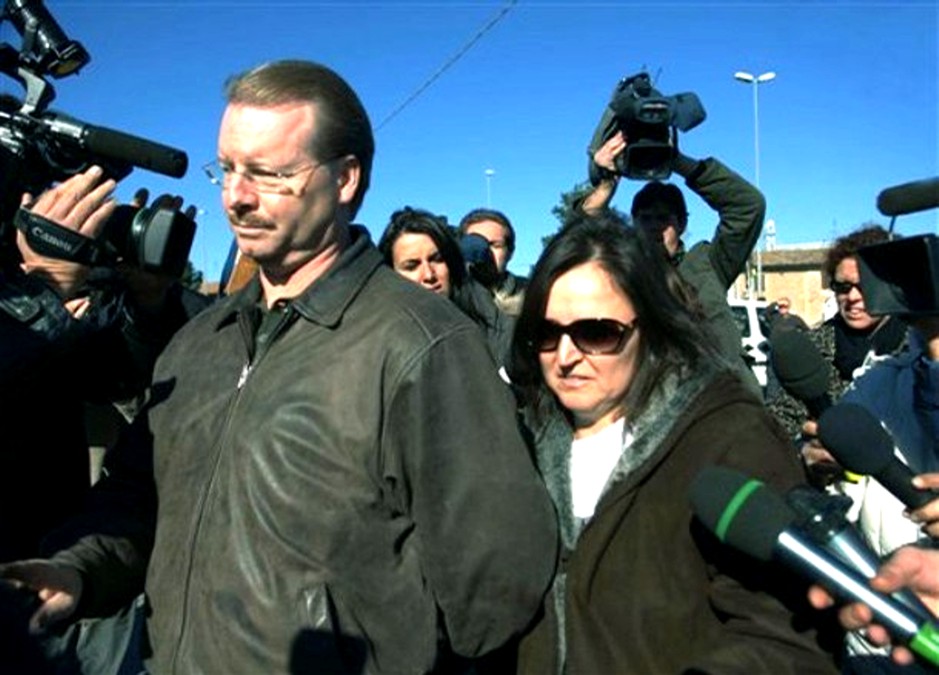
The following is a personal observation on the state of play of the Seattle driven PR campaign and resultant Media involvement in the first appeal stage of dear Meredith’s murder trial.
Amanda Knox and Raffaele Sollecito were unanimously convicted of involvement in her barbaric torture and murder by the Court in Perugia in December 2009.
As far as I am aware nether the Court of Assisi or the Kercher family (or their agents) are actively engaged in presenting any PR information whatsoever on the part of the ongoing trial process to any media outlets anywhere.
On the other hand, we know for a fact that the Knox/Mellas faction have engaged in and continue to use the services of a national brand public relations firm to “put their spin “ of events into the public arena.
Their areas of focus have primarily been the USA electronic and print media with secondary efforts attempted with the UK media.
What the USA and UK public are witnessing in the present media output therefore is the culmination of the intense and bought (paid for if you like) “reporting” solely on behalf of and in the interest of Amanda Knox (they are not bothered for now to include that waste of media space Raffaele).
The USA and UK media have little to zero interest in this case as a newsworthy story and consequently will not get off their seats to report on it. It was a seven day wonder that dragged on too long and now no longer sells newspapers.
They will however accept handouts in the present form of biased and prejudiced propaganda press releases from the Knox/Mellas camp and print it as “reporting”. It fills column inches and can be “tarted up” to a degree of sensationalism for occasional use and increased circulation.
The PR campaign would have us believe that the AK/RS appeals submissions have debunked the existing evidence and discredited the witnesses.
This of course is what they are paid to say even when it is not the case. It may have an agreeable ring to it for the accused supporters but holds little sway with the eight person judicial adjudicating panel comprising two professional Judges and six lay volunteers..
It is the job of the defence legal team to say that they have turned a corner in terms of exonerating their clients. However turning a corner is not such a big deal when you are right bang in the middle of a maze.
The sheer volume of evidence that exists and the undeniable interconnections that links it all to AK & RS constitutes that maze; someone should remind their supporters that you can turn many corners in a maze and still not get out.
It must be remembered that holding this appeal is an automatic function under the Italian Judicial system.
The PR campaign would (wrongfully) have its audience believe that this appeal is happening as a result of faults in the prosecution case uncovered during the first trial; because this is the practice in the USA and UK where an appeal would only be granted if there were discernible strong grounds and on merit.
The spin is capitalising on the (wrongful) perception by the media and the public in the USA and UK that there must be strong grounds for an appeal.
This is not the case here. It is an automatic appeal.
The prosecution case was solid and the conviction was unanimous in the first trial. Nothing has changed. The prosecution case is still the same and the outcome is therefore likely to be the same.
Make no mistake; the Judges involved in the appeal process are not fickle or weak-minded individuals that are easily swayed by media spin, insults or bullying attempts. Neither are they bought or in the pocket of the Knox/Mellas PR apparatus.
It is likely they are unaware of much or indeed any of the “spin” that is being generated by the Knox/Mellas faction in the media outlets in the USA and UK.
Most likely they have real lives to get on with themselves and see (rightfully) this appeal trial as simply another task they will perform correctly out of hundreds of others they come across in the course of their career; it is no more or no less important than every other case they have or will work on.
This is likely the same scenario that the Judges in the initial trial undertook when they carried out their duty in a fair and honest fashion.
They came to a unanimous decision based entirely on the evidence presented to them that Amanda Knox and Raffaele Sollecito were guilty of compliance in the murder of dear Meredith. The same can be stated for every Professional judge that sat on every AK&RS court appearance since dear Meredith’s murder.
Just because a blog or PR fed news outlet in the USA or the UK proclaims that the tide is turning in favour of the accused doesn’t mean that the Judges in Italy are even aware that there is a tide there in the first place at all; not to mention even considering that it is turning.
These Judges by their very nature are genuine and conscientious people.
They will not favour PR fed media coverage and disregard the evidence presented before them in court. And they certainly are not in anyone’s pockets. They will do their duty in the same upright manner and with the same exemplary scruples as was carried out by the Judges in the first trial.
Based on the case presented in the first trial and now to be re-presented in the appeal (and once you remove the PR hype) there is every reason to believe the convictions of AK&RS will stand. This is how I see this second trial going.
Rest in Peace dear Meredith.
Thursday, June 10, 2010
Oprah Winfrey Still Snowed: Still Helping To Advance The Fiction That A BLACK Guy Did It Alone
Posted by Peter Quennell
Sad but true. A black commentator helping to revile Rudy Guede. Certainly a historic first for Oprah - though the US media is unlikely to notice.
Oprah’s emotional fawning over the Knoxes and the Mellases (with copious shots of their kids, and some misleading statements by Ted Simon) is being rebroadcast on the ABC network this afternoon.
Click here for our previous comment - plus plenty by our insightful readers.
Wednesday, June 02, 2010
Calunnia Claims At The Core Of The Problem For Amanda Knox - And Her Parents
Posted by Peter Quennell
Here is Amanda Knox claiming mistreatment as the reason why she falsely fingered Patrick Lumumba.
This was the court CCTV camera feed to the press-room on 12 June 2009. It was legitimate for the reporters there to capture it.
Our Italy-based Italian-speaking posters Fiori and Nicki both observed that to many or most Italians. Knox’s two days on the stand rang pretty hollow. She apparently needed to come across as a lot more fragile for the claims in the video to ring true.
Yesterday at the first hearing to set the date for Knox’s new trial, the number of police interrogators who are considered to have been targets of calunnia Amanda Knox was stated as twelve.
They will presumably all be testifying both at Knox’s new trial in October, and at the trial of Curt Knox and Edda Mellas, who allegedly repeated Knox’s claims on TV, and for whom the first hearing is coming up on 7 July.
They could face prison time and/or fines.
Judge Claudia Matteini observed that her presiding over the early hearings into Meredith’s case in 2008 (and denying Knox house arrest, a denial believed based in part on a psychological profile never made public) was not automatically a reason for her being replaced as a judge in this new case.
Knox had not made the claims you can see in the video at the time Judge Matteini was presiding. However, she agreed with what seems a reasonable defense request that a higher court should take the question of a possible conflict of interest under review.
She stated that the appeals court will issue a decision on who should be the judge for the new trial on 17 June.
Tuesday, December 08, 2009
Most Important Italian Paper Balks At The Attempts In US At Intimidation
Posted by Commissario Montalbano
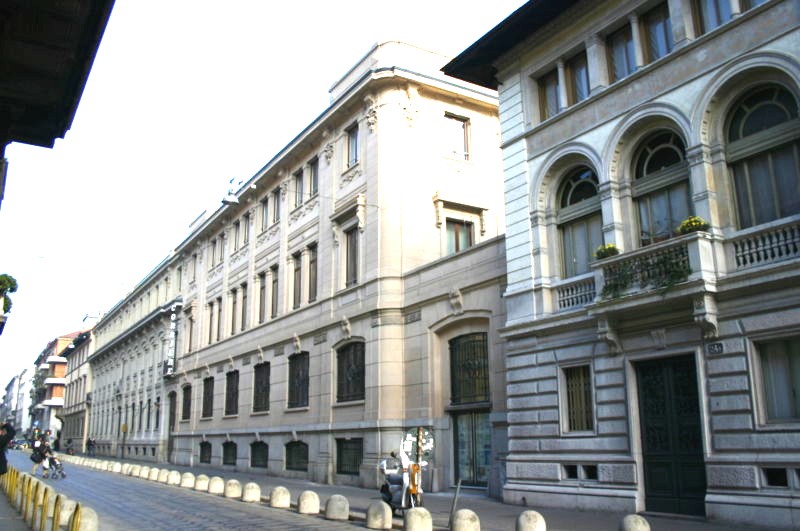
[Above: The Corriere Della Sera building in Milan]
The Corriere Della Sera is the Italian equivalent of the New York Times and the London Times.
It wields huge influence throughout Italy and reflects the popular mood in its reporting. It does NOT like the campaign of vilification against the trial and its outcome. Here is a translation of today’s blast by Beppe Severgnini.
The do-it-yourself verdicts and that wrongful U.S.A. cheering
Many Americans criticize the ruling, but have never followed the case. Why do they do that?
Judicial nationalism and media justice, when put together, form a deadly cocktail. We also have Reader-patriots and journalist-judges ourselves, but what is happening in the United States after the conviction of Amanda Knox, is embarrassing. Therefore it is highly worth pondered upon.
American television, newspapers and websites are convinced that Amanda is innocent. Why? No one knows. Did they follow all of the trial? Did they evaluate the evidence? Did they hear the witnesses who, moreover, testified in Italian? Of course not! They just decided so: and that’s enough.
Like Lombroso’s*** proselytes: a girl that is so pretty, and what’s more, American, cannot possibly be guilty. No wonder Hillary Clinton is now interested in the case: she’s a politician, and cannot ignore the national mood.
There are, as I wrote at the beginning, two aspects of the issue. One is judicial nationalism, which is triggered when “a passport is more significant than an alibi” as noted in yesterday’s Corriere’s editorial by Guido Olimpio. The United States tend to always defend its citizens (Cermis tragedy, the killing of Calipari) and shows distrust of any foreign jurisdiction (hence the failure to ratify the International Criminal Court). In the case of Italy, at play are also the long almost biblical timespans of our justice, for which we’ve been repeatedly criticized at the European level.
But there is a second aspect, just as serious as the first: the media justice operation. Or better: a passion for the do-it-yourself trial. It’s not just in the United States that it happens, but these days it is precisely there that we must look, if we want to understand its methods and its consequences.
Timothy Egan - a New York Times columnist, based in Seattle, therefore from the same city of Amanda - writes that the ruling “has little to do with the evidence and a lot with the ancient Italian custom of saving face.” And then: “The verdict should have nothing to do with medieval superstitions, projections sexual fantasies, satanic fantasies or the honor of prosecuting magistrates. If you only apply the standard of law, the verdict would be obvious “.
But obvious to whom? Egan ““ I’ll give it to him - knows the case. But he seems determined, like many fellow citizens, to find supporting evidence for a ruling that, in his head, has already been issued: Amanda is innocent. In June - the process was half-way - he had already written “An innocent abroad” (a title borrowed from Mark Twain, who perhaps would not have approved this use).
To be sure, among the 460 reader comments, many are full of reasonable doubt and dislike journalists who start from the conclusion and then try in every way to prove it.
I did not know if Amanda Knox was guilty. In fact, I did not know until Saturday, December 5, when a jury convicted her. I do have the habit of respecting court judgments, and then it does not take a law degree ““ which I happen to have, unlike Mr. Egan - to know how a Court of Assizes works.
It is inconceivable that the jurors in Perugia have decided to condemn a girl if they had any reasonable doubt. We accept the verdict, the American media does not. But turning a sentence into an opportunity to unleash dramatic nationalistic cheering and prejudice is not a good service to the cause of truth or to the understanding between peoples.
A public lynching, a witch hunt trial? I repeat: what do our American friends know? How much information do those who condemn Italy on the internet possess? How much have those who wrote to our Embassy in Washington, who accused the magistrates in Perugia, and who are ready to swear on Amanda’s innocence, studied this case for past two years?
Have they studied the evidence, assessed the experts’ testimony, or heard the witnesses of a trial that was much (too) long? No, I suppose. Why judge the judges, then?
They resent preventive detention? We don’t like it either, especially when prolonged (Amanda and Raffaele have spent two years in prison before the sentence). But it is part of our system: in special cases, the defendant must await trial while in jail.
What should we say, then, about the death penalty in America? We do not agree with it, but we accept that in the U.S. it is the law, supported by the majority of citizens. A criminal, no matter which passport he has in his pocket, if he commits a murder in Texas, knows what he risks.
Before closing, a final, obligatory point: I also did not like the anti-Amanda crusade in the British media, for the same reasons. The nationality of Meredith, the victim, does not justify such an attitude.
For once - can I say it? - We Italians have behaved the best. We waited for and now we respect the ruling, pending further appeal.
I wish we Italians behaved like that with all other high profile crimes in our country - from Garlasco’s case and on - instead of staging trials on television and spewing verdicts from our couch.
***Note: Cesare Lombroso, was a 19th century Italian criminologist who postulated that criminality was inherited, and that someone “born criminal”’ could be identified by physical defects.
[Below: the distinguished Italian columnist Beppe Severgnini of Corriere]
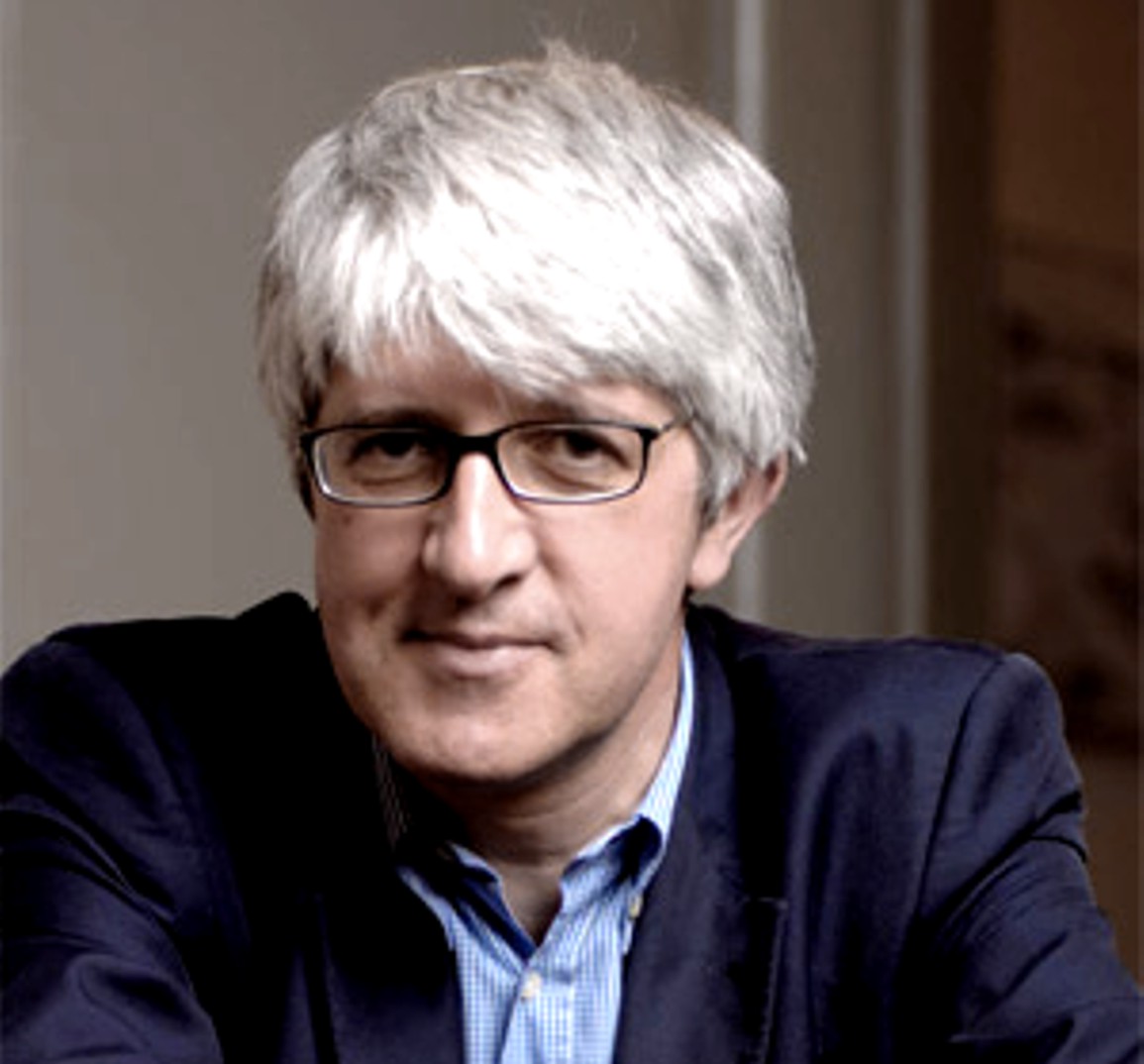
Monday, October 12, 2009
Case For The Prosecution: #5 Defendants’ Claims Shown As Mass Of Contradictions
Posted by The Machine

[Above: Perugia’s central police station]
Preamble
This series is a summary of the prosecution’s case in about ten parts, with a commentary on matters of key significance.
The material has been reordered so that evidence presented at several points in the trial can be described in one post here. Sources used are the many published reports, some transcripts made of the testimony and the mobile phone records of Amanda Knox and Raffaele Sollecito.
The first four posts were on the DNA evidence, the luminol-enhanced footprint evidence, and Raffaele Sollecito’s and Amanda Knox’s various conflicting alibis.
Now we look at the many contradictory statements of Amanda Knox and Raffaele Sollecito brought out by the prosecution.
The prosecution showed that not only are they contradicted by one another. They are contradicted by telephone and computer records, by closed-circuit TV footage, and by the corroborated testimony of several witnesses.
One question that Judge Massei and Judge Cristiana and the six members of the jury will now be asking themselves is: if Amanda Knox and Raffaele Sollecito are innocent and had nothing to hide, why did they lie so repeatedly?
Knox’s and Sollecito’s lawyers have had the unenviable task of trying to explain all their contradictions away.
Sollecito’s lawyers have argued that he lied out of confusion and fear. Knox’s lawyers have argued that she dramatically changed her version of events because she was hit and mistreated by the police on 5 November 2007. Neither of these claims stood up to close scrutiny.
And the prosecution made it overwhelmingly apparent to the judges and the jury that Knox and Sollecito each lied deliberately and repeatedly to various people even before they were suspects and even before Knox was questioned on 5 November.
It was made intensely obvious that Knox and Sollecito’s versions of what they did on 1 November had very little in common with each other, especially in that part of the evening when they both claim they couldn’t remember very much because they were suffering from cannabis-induced amnesia.
There is no convincing scientific evidence that shows that cannabis can cause such dramatic amnesia. Skunk cannabis can cause extreme psychotic episodes and murders have occurred as a result. Long term use of cannabis can affect short-term memory and users might have difficulty recalling a telephone number. But wipe out whole chunks of an evening from anyone’s memory banks? The proof simply isn’t there.
1-A) The afternoon of 1 November 2007 according to Raffaele Sollecito
Sollecito told investigators that Knox and he had left the cottage on Via della Pergola at 6.00pm and that they went for a walk downtown. They passed through Piazza Grimana, Piazza Morlacchi and the main fountain in Corso Vannucci.
1-B) The afternoon of 1 November 2007 according to Amanda Knox
Knox told investigators it was an hour earlier at 5.00pm and that they went straight to Sollecito’s apartment.
2-A) The evening of 1 November 2007 according to Raffaele Sollecito
Raffaele Sollecito first claimed in an interview with Kate Mansey from the Sunday Mirror that he and Amanda Knox were at a friend’s party on the night of the murder.
Sollecito said that he downloaded and watched the film Amelie during the night. However, computer expert Mr Trotta said that the film had actually been watched at around 6.30 pm.
On 5 November Sollecito told police that Knox went to meet friends at Le Chic at around 9pm and that she didn’t return until about 1am:
“At 9pm I went home alone and Amanda said that she was going to Le Chic because she wanted to meet some friends. We said goodbye. I went home, I rolled myself a spliff and made some dinner.”
Sollecito claimed that he had spoken to his father at 11pm. Phone records show that there was no telephone conversation at this time. Sollecito’s father had called him a couple of hours earlier at 8.40pm.
Sollecito claimed that he was alone and surfing the Internet from 11pm to 1am. No technical evidence of this was introduced. computer specialists have testified that his computer was not used for an eight-hour period on the night of Meredith’s murder
The Kercher’s lawyer, Franco Maresca, pointed out that credible witnesses had really shattered all of Sollecito’s alibi for the night of the murder.
2-B) The evening of 1 November according to Amanda Knox
Amanda Knox told the police that she hadn’t replied to Diya Lumumba’s text message. The police knew full well that this wasn’t true because they already had her mobile phone records that proved that she had texted him.
“After that [finding out she wasn’t required at Le Chic] I believe we relaxed in his room together, perhaps I checked my email.” But no internet activity at all was proven at Sollecito’s apartment beyond the early evening.
“One thing I do remember is that I took a shower with Raffaele and this might explain how we passed the time. In truth, I do not remember exactly what day it was, but I do remember that we had a shower and we washed ourselves for a long time. He cleaned my ears, he dried and combed my hair.”
But Sollecito made no mention of taking a shower with Amanda Knox on the night of the murder.
In Amanda Knox’s handwritten note to the police she claimed that she and Sollecito ate around 11.00pm:
“One of the things I am sure that definitely happened the night on which Meredith was murdered was that Raffaele and I ate fairly late, I think around 11 in the evening”
But Knox testified at the trial that she and Sollecito ate around 9.30pm. “After we ate Raffaele washed the dishes but the pipes under his sink broke and water flooded the floor.”
3) The early hours of 2 November
Both Knox and Sollecito claim that they woke up late on 2 November. However, their mobile phone records show the mobiles were turned on at approximately 6.02am. Sollecito also used his computer at 5.32am. The Italian Supreme Court remarked that his night must have been “sleepless” to say the least.
4) The afternoon of 2 November
At 1208pm, Amanda Knox called Filomena and said she was worried about the front door being open and blood stains in the small bathroom. Knox claims that she made this call from Sollecito’s apartment.
However, in his prison diary, Raffaele describes the same conversation as taking place at the cottage.
Knox claimed that when she called Meredith’s Italian phone it “just kept ringing, no answer”.
Her mobile phone records show this call lasted just three seconds, and the call to the UK phone lasted just four seconds. (Meredith’s WeAnswer Call service, which prides itself on how quickly it answers its customers’ calls, boasts that their average speed-of-answer is 5.5 seconds. There were no messages left.)
At 12.34pm Amanda and Filomena again spoke on their phones. Filomena said, “We spoke to each other for the third time and she told me that the window in my room was broken and that my room was in a mess. At this point I asked her to call the police and she told me that she already had.”
The prosecution introduced records to show that Knox and Sollecito didn’t actually call the police until 12.51pm.
In her email to friends in Seattle on 4 November, Amanda Knox says she called Meredith’s phones after speaking to Filomena. Knox’s mobile phone records prove that this was untrue.
In the email, Amanda also claims that she called Filomena back three quarters of an hour later ““ after Raffaele finished calling the police at 12:55pm. But cellphone records show that Knox never ever called Filomena back at all.
Sollecito and Knox both claimed they had called the police before the postal police had turned up at the cottage and were waiting for them. Sollecito later admitted that this was not true, and that he had lied because he had believed Amanda Knox’s version of what had happened.
He said he went outside “to see if I could climb up to Meredith’s window” but could not. “I tried to force the door but couldn’t, and at that point I decided to call my sister for advice because she is a Carabinieri officer. She told me to dial 112 (the Italian emergency number) but at that moment the postal police arrived.
He added: “In my former statement I told you a load of rubbish because I believed Amanda’s version of what happened and did not think about the inconsistencies.” (The Times, 7 November, 2007).
The CCTV cameras in the car park record the arrival of the postal police at 12.25pm which corroborates Sollecito’s admission that he had spoken rubbish.
Knox’s email to friends in Seattle describes the decision to call the police as something implemented by herself and Sollecito, after she had tried to see through Meredith’s window, and after Raffaele had tried to break down Meredith’s door.
Knox’s mobile phone records show that she called her mother at 12:47pm, but she makes no mention of this call in her email. (This call was very extensively analysed by fellow poster Finn MacCool and he showed a fascinating progression in both Amanda’s and her mother’s recollection of that call.)
Edda Mellas claims that she told Amanda to hang up and call the police ““ but Amanda made no mention of this advice from her mother in describing their decision to call the police.
Amanda Knox testified that she couldn’t even remember phoning her mother, which will be very difficult for the court to believe. Phoning her mother when it is well after midnight in Seattle to tell her mother that she thought somebody had broken into her home and that her housemate was missing seems an unlikely thing to forget.
Amanda Knox told the postal police that Meredith always kept her door locked. Filomena strongly disagreed with her, and told the postal police the opposite was true.
The prosecution also made it obvious to the court that Amanda Knox and Raffaele Sollecito, like Rudy Guede, changed their stories to fit new facts as they became known:
When Sollecito was confronted with the mobile phone records on 5 November, he immediately admitted that they hadn’t called 112 before the postal police arrived.
After initially denying it, Knox readily admitted that she was at the cottage when Meredith was killed when she found out that Sollecito had stopped providing her with an alibi.
Despite this changing of their stories to take into account the latest known facts, Knox’s and Sollecito’s versions still contained numerous contradictions. Sollecito’s final alibi contains several apparent lies, and Amanda Knox accused Diya Lumumba of killing Meredith while making no mention of Rudy Guede.
In Conclusion
The reasons Amanda Knox’s and Raffaele Sollecito’s lawyers have given for them lying - namely false memories, confusion and fear ““ seem very unlikely to fly with the court.
Repeated evidence was introduced to show that Meredith’s other flatmates and friends all behaved radically differently, and told what were obvious truths that matched up repeatedly and resulted in not a single major contradiction. All were checked out in this careful fashion and then allowed to go on their way.
Only the defendants’ claims failed to coincide or match with everything else.
Again, and again, and again.
Tuesday, July 21, 2009
Case For The Prosecution: #1 The DNA Evidence
Posted by The Machine

[Above: Prosecutor Manuela Comodi, click for larger image]
1. Preamble
Nearly 200 hours over 23 days.
That is how long the prosecution took to present its voluminous case against Amanda Knox and Raffaele Sollecito, including time taken by the defense teams to conduct cross-examinations.
This series is a summary of the prosecution’s case in five parts, with a commentary on matters of key significance. The material has been reordered so that for example the DNA evidence presented at several points in the trial can all be described in one post here.
Sources used are the many published reports and some transcripts made of the testimony. All the main witnesses will be named in this series with a brief mention of who they are and their qualifications.
Two past posts that may aid in understanding the DNA testimony are Nicki’s post here and Fiori’s post here. All past DNA posts can be found in this area.
2. The Large Double DNA Kitchen Knife
The double DNA knife is the knife that was sequestered from Sollecito’s apartment. Although there was an imprint of another knife at the scene, and one defense expert argued that there may have been yet another, it remains plausible that this is the weapon that was used to murder Meredith.
Dr. Patrizia Stefanoni was the leader of the forensic team from Rome that carried out all the forensic collections at Meredith’s house. She testified unequivocally about the knife. A small sample of Meredith’s DNA was found to be in a groove on the blade, and Amanda Knox’s DNA was found to be on the handle.
Dr. Stefanoni noted that there were peculiar diagonal scrapes on the knife blade, which suggested that the knife had been vigorously cleaned.
Both Dr. Renato Biondo, the head of the DNA Unit of the scientific police, and the Kerchers’ own DNA expert, Professor Francesca Torricelli, provided independent confirmation that this forensic finding is accurate and reliable.
The defence teams’ forensic experts are not disputing that Meredith’s DNA was on the blade of the knife. Instead they are arguing that the knife was somehow contaminated for the DNA to actually be there.
Dr Stefanoni has firmly excluded this possibility of contamination in transit or in the laboratory. She testified that there hasn’t been a single instance of contamination in her laboratory for at least the last seven years, and every precaution was taken here to ensure that different traces were not mixed.
A police officer who led a search of Sollecito’s apartment added weight to the prosecution’s assertion that the double DNA knife had been cleaned with bleach. He testified that he had been struck by “the powerful smell of bleach”.
When Raffaele Sollecito heard that the scientific police had found Meredith’s DNA on the double DNA knife in his apartment, he did not deny the possibility of the DNA being there.
Instead he made a claim about accidentally pricking Meredith’s hand whilst cooking at his apartment. “The fact that Meredith’s DNA is on my kitchen knife is because once, when we were all cooking together, I accidentally pricked her hand.’‘
However Meredith had never been to Sollecito’s apartment and so it seems Sollecito could not have accidentally pricked her hand there whilst he was cooking. In attempting to explain the presence of Meredith’s DNA on the blade, he did so in a way easily disproved and seemed to further implicate Amanda Knox and himself.
3. Sollecito’s DNA On Meredith’s Bra Clasp
An abundant amount of Raffaele Sollecito’s DNA was found on Meredith’s bra clasp, and Dr. Stefanoni has excluded the possibility of any contamination.
This is the bra clasp that was collected some weeks after the first forensic collection and it was conceded that it should have been collected earlier. It was also argued that valid DNA evidence in other cases is often collected weeks or months or even years after the crime when a suspect object is unearthed.
Sollecito’s lawyer Ms Buongiorno is perhaps not surprisingly claiming that this bra clasp was also contaminated in the laboratory. The problem for them is to explain precisely where such an abundant amount of Sollecito’s DNA could have come from, and how it was so firmly imprinted.
The only other instance of Sollecito’s DNA at the cottage was found on a cigarette butt in the kitchen, seemingly an unlikely source at best.
It would seem unlikely that the judges and jury will conclude that the bra clasp was contaminated in a strictly controlled laboratory where Dr. Stefanoni follows rigorous laboratory procedures. She is an internationally renowned and very experienced forensic expert and was part of a Disaster Investigations Team which identified disaster victims via their DNA.
Alberto Intini is the head of the Italian police forensic science unit. Andrea Vogt reported as follows in the Seattle Post-Intelligencer on Mr Intini’s testimony about the possibility or otherwise of contamination:
“Alberto Intini maintained that the crime scene had not been contaminated and pointed out that laboratory testing revealed none of the investigators’ prints or biological traces. Mr Intini said “In fact, it is the results that tell you if it was done correctly, and I can tell you that in this investigation there was not even one trace of any of our operators.”
He also pointed out that unless contamination has been proved, it does not exist. “It is possible in the abstract that there could have been contamination, but until this is proved, it does not exist.”
The prosecution demonstrated on the final full day of testimony that Meredith’s bra was actually removed with a knife some time after she had been killed.
Judge Paolo Micheli presided over the fast-track trial of Rudy Guede and committed Sollecito and Knox to trial. In looking at the identical evidence he asked “Who had a reason to come back, cut off Meredith’s bra, and move her body some time later?”
The present judges and jury might conclude differently, but Judge Micheli concluded that it would only have been done by someone who knew about Meredith’s death and had an interest in arranging the scene in Meredith’s room to point away from themselves. He discounted Rudy Guede, who apparently went home, cleaned himself up, and then was seen out on the town.
4. Knox Blood With Meredith’s
There were five instances of Amanda Knox’s blood or DNA mixed with Meredith’s blood in three different locations in the cottage in Via della Pergola: the bathroom, the hallway, and Filomena’s bedroom.
Amanda Knox’s blood was found mingled with Meredith’s blood in three places in the bathroom: on the ledge of the basin, on the bidet, and on a box of Q Tips cotton swabs.
Dr. Stefanoni testified that it would have been “strange” that three traces of blood with both Meredith’s and Amanda Knox’s DNA would have been left at different times.
Barbie Nadeau in Newsweek pointed out a reason why the blood stains must have been left on the night of the murder:
“Legal experts who follow this case have suggested that blood evidence cannot be dated and therefore could have been left weeks before the murder. But when Knox testified in her own defense in June, she conceded that there was no blood in the bathroom the day before the murder, effectively dating those blood stains to that night.”
Perhaps Knox had a bloody earring piercing, and maybe a drop landed on a drop of Meredith’s blood. But in three different places? Perhaps it is not surprising that the defence lawyers have not brought up the subject of the mixed DNA in the bathroom in their part of the trial.
Meredith’s blood was found on the top part of the light switch in the bathroom she shared with Amanda Knox. This suggests that it was deposited there when the light was switched on. Meredith’s blood was also found on the toilet lid. There were no DNA or other physical traces of Rudy Guede in that bathroom.
Knox’s DNA and Meredith’s DNA was also found mixed together in a bloody footprint in the hallway of the new wing of the house.
A mixture of Knox’s DNA and Meredith’s blood was also found in Filomena’s room. This seems to be compelling evidence because Knox had never claimed she entered Filomena’s room when she checked the cottage. This room was the scene of the alleged break-in, and there were glass fragments on the floor.
Meredith’s blood had been cleaned up in this room, but it was nevertheless revealed by luminol.
Barbie Nadeau concludes in a Daily Beast report that the mixture of Knox’s DNA and Meredith’s blood in Filomena’s room seems more incriminating than the double DNA knife:
“But perhaps more damning even than the knife was Stefanoni’s testimony that a mix of Knox’s DNA and Kercher’s blood was found on the floor in the bedroom of a third roommate, Filomena Romanelli.”
Sunday, June 14, 2009
Italy Shrugs: Why Amanda Knox’s Testimony Seems To Have Been A Real Flop
Posted by Nicki
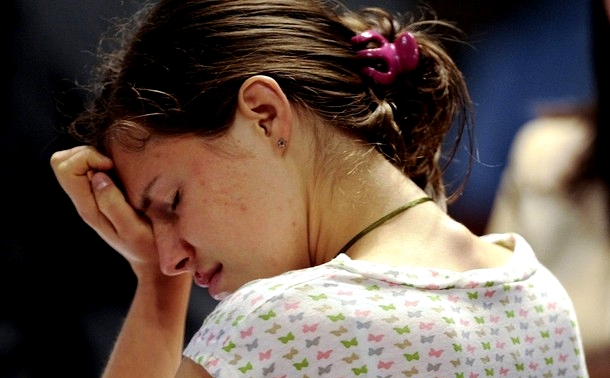
Posting from Milan (image below) where we also have been watching Knox testify in Italian.
Here are just three of the disbelieving headlines on the testimony that have been appearing in the Italian press.
- All of Amanda’s wrong moves (La Stampa)
- Amanda growls but Patrick bites (Il Giornale)
- Amanda: I am innocent. But many “I don’t remembers” start popping up (ANSA)
As many of us were expecting, Amanda’s testimony has backfired. She came across not as confident but arrogant, not as sweet but testy, not as true but a fake who has memorized a script, an actress who is playing a part but not well enough to fool the public.
It is true that the Italian media and public opinion in general have not been very benign with Knox. But not for the reasons that the American media seem to want to push.
Let’s make it clear, Amanda Knox is not on trial because Italians are unaccustomed to or even “jealous” of her freedom and lifestyle”¦ The first time we read these “explanations” we found them quite laughable.
But for many or most Italians the initial amusement has now given way to a profound irritation. Amanda Knox’s lifestyle is shared by hundreds of thousands of Italian girls, who like partying and sex as much as she does - or even more - and they live a happy carefree life with no fear of being perceived as “bad girls.” They behave no differently from any other girl of the same age in America or in any other Western country.
Dear American media, welcome to the 21st century and to globalization! Please put aside pseudo-romantic and passè vision of a country where all men chase American girls because Italian women are not as approachable for “cultural” reasons: Italian men are into foreign girls no more but no less than Italian girls are into foreign boys.
They generally greatly like Americans because of their great interest and curiosity for a country and its people that many Italian youngsters have only known through books or movies. Amanda Knox is not on trial because she is American and therefore too “emancipated”. She could even be from the North Pole as far as Italians are concerned.
What really matters to them is to find the truth about Meredith’s murder and to do real justice for her terrible death. Italians don’t much like Amanda primarily because they perceive her as a manipulative liar, who is suspected of having committed a heinous crime for which there is a whole stack of evidence - and they perceive this even more-so after this last week’s court hearings.
In addition, the US media’s seemingly endless bashing of the Italian justice system, and of the whole country, most recently by CBS and ABC, has definitely made things worse.
The Italian police are NOT known to be particularly violent - although, agreed, it may happen when they’re dealing with violent males suspects from Eastern Europe or Africa, or in the streets when they have to deal with a riot. Violence is NEVER used with white, female college students from Italy, America or elsewhere.
And Italy is a sovereign state with a great juridical tradition. Receiving condescending lectures by the media of a country where the death penalty is still applied in many states comes across as more than insulting - it is utterly ridiculous. Before you judge the “backwardness” of the Italian justice system, you should at least first read Cesare Beccaria’s amazingly humane Of Crimes And Punishments (written in 1764) and perhaps you’ll reconsider.
If the American media just cannot understand that there are alternatives to the “American way “, that may not be so bad after all. But they should at least show some respect for a foreign, sovereign state and its people.
If the media can’t even manage to do so - and they really want to help Amanda - the best thing to do now is to go quiet and let the Italian justice work at its pace and according to its own principles. If Amanda is only guilty of arrogance, callousness and narcissism, she will be free soon.
Dear American followers of Meredith and, for that matter, also friends of Amanda Knox. May I speak right to you, and right past the media?
There has been no character assassination, no demonization, no great wave of hate and revenge, no mad prosecutor, no Satan theory of the crime, no invented evidence, and no massive bumbling.
What there has been is a whole stack of evidence and a VERY careful process. Kernit in effect described all the evidence in his extraordinary 150 questions.
And on Friday and Saturday, Amanda Knox for better or worse chose to answer NONE of them.
Saturday, June 13, 2009
Knox Testimony Does Not Seem To Have Gained Much Traction Here In Italy
Posted by Fiori
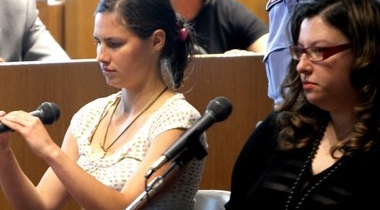
Posting from Florence (image below) where we have all been watching Knox testify in Italian.
I don’t believe her. It is interesting to see Amanda Knox being cool and self-confident, but testifying about how disturbed she became when the police became pushy during her interrogation. It doesn’t fit.
And it comes across as untrustworthy and contradictory that when asked about her drug use, she puts on a “schoolgirl”’ attitude: In effect “Sorry, daddy judge, I was bad, don’t punish me for being young”. This seems definitely out of order with the rest of her performance.
“Performance” is the impression I get from viewing the segments shown from the court - a well-rehearsed performance. I suppose that the jury will wonder how this cool person can forget whether she has replied to a sms-message, how she can get so confused that she names Patrick, afterwards “is too afraid to speak to anyone but her mother”, and so on.
Most striking is that Amana Knox’s defence seems to stick firmly to the strategy of “mistreatment”; in effect that the only reason for AK being arrested is false statements produced under “illegal” pressure from the police.
By making “the ethics of police interrogation” the core question of her testimony, the defence - probably deliberately - creates a lot of associations to recent public debates of torture and interrogation techniques applied at Guantanamo Bay and in Iraq.
By doing so they seem to want to try to turn the jury’s attention away from the point that AK knowingly participated in a murder investigation, and that any person with her intelligence will know that anyone who is called as a witness is required to show respect for the authorities - regardless of their nationality!
With reference to a variety of public materials from the US (“48 Hours” by CBS and many other reports), the way in which the Italian police have conducted Knox’s interview does not significantly differ from similar type interrogations made by US police. (This is not a stamp of approval, but removes the reason for any serious critique of the conduct of the Italian police.)
Her calmness and cool attitude, including her performing in two languages, does not, in my view - contrary to what the defence and her father expect - help to bring about an image of “another Amanda Knox” or a “more true Amanda Knox”.
Mostly her performance seems to contribute to shaping her image as complex, manipulative, intelligent, attention-seeking, and with only vaguely defined limits of identity.

